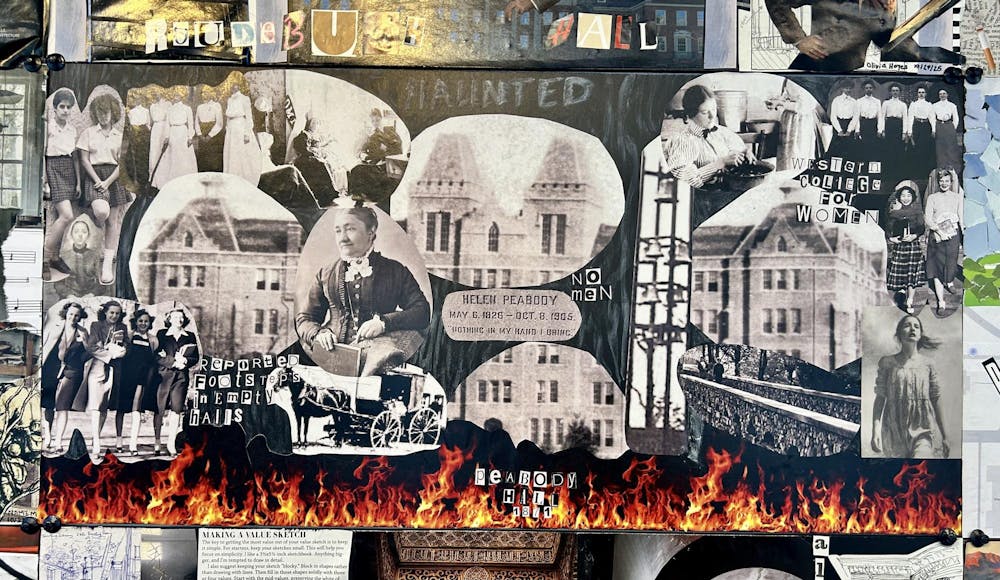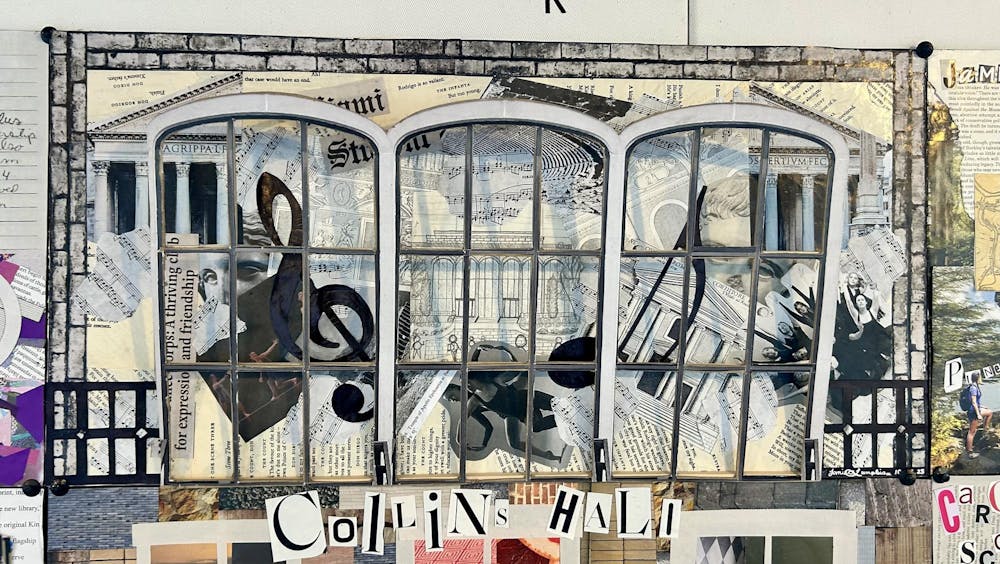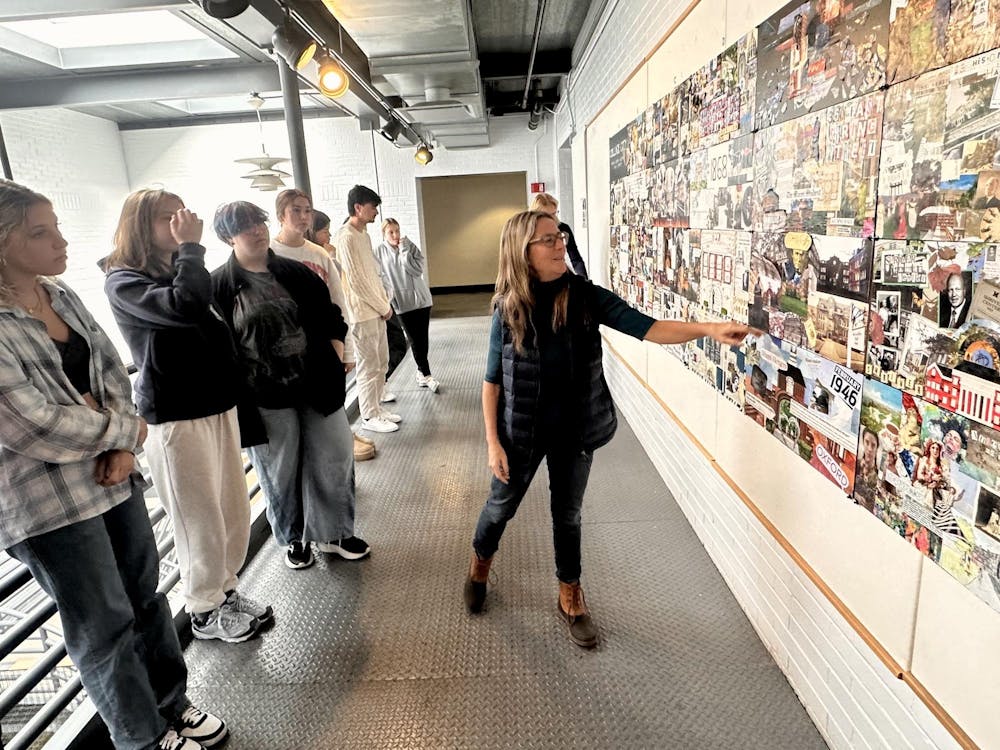Alumni Hall used to be Miami University’s primary library. Authors’ names still line the rotunda, and George Washington still greets students as they walk in the front doors. Now, however, it’s primarily architecture and interior design students walking up the spiral staircases on their way to class.
As aspiring architects walk past classrooms and through a set of double doors into the added architecture studio, they see their own work taking up the wall in front of room 203; all 4 feet by 44 feet of it.
The collage, made up of 85 smaller collages, depicts the social and cultural history of Miami through the investigation of 50 buildings.
Terry Welker, a visiting assistant professor of architecture, first assigned this project three years ago during his first year teaching at Miami. He said when thinking about architecture, it’s not just the physical world, but the intersection of cultural, social and physical aspects.
Architects dive into social aspects like: Who's there? What are they doing? Why are they doing it? What's the story there?
The cultural perspective includes: What are the belief systems? What's the history of this place? What are the traditions? What are the things that help us know and understand this sense of place through experience?
“And so all three of those things add up,” Welker said, “so what we end up with is a collection of really fantastic stories.”

Lauren Molyneaux, a first-year interior design major, chose Peabody Hall for her collage.
Lauren Molyneaux, a first-year interior design major, chose Peabody Hall for her collage.
The first-year dorm and academic building holds personal history for Molyneaux. In 1978, her family donated the Molyneaux-Western Bell Tower, which stands across from the Freedom Summer of 1964 Memorial and next to Peabody Hall.
She admitted, though, that she mostly chose Peabody for the “hauntedness” of it.
“I feel like some people have connections to the school and there are many pieces of history behind every building,” Molyneaux said.
Enjoy what you're reading?
Signup for our newsletter
Welker said the vision for the assignment was to help first years answer the question: What is architecture?
He added that there’s a naive saying of, “Well, it’s just about designing objects or buildings.”
But it’s about more than just that – it’s an understanding of the social aspects of architecture.
It’s asking what's going on in here? Why are we doing this? What is this? What's the purpose of this place? And understanding that meaning and context in architecture only occurs over time with experience.

Caleb Pelton chose the McGuffey House and Museum as his building of choice.
Another student in Welker’s Architecture 113 class, Caleb Pelton, chose the McGuffey House and Museum as his building of choice.
From his research, the first-year architecture major said it’s one of the oldest buildings on campus. The namesake, William Holmes McGuffey, was an important figure to education throughout much of the 19th and 20th centuries due to his series of readers, which sold more than 120 million copies.
He said he also liked how close it was to Alumni Hall because it made the trips back and forth quicker.
“I like how simple it is,” Pelton said. “I liked its location – it's pretty central on campus, but it gets looked over when you look at Miami. It was actually really important, and learning about its importance is really cool.”
Students said they not only learned history and research techniques during the collage process, but also honed their sketching and crafting skills.
“[The overall purpose of the assignment] was just to learn more about Miami's history, how every building tells a story,” Pelton said. “[The curator] said, ‘This place is a place of memory and a glimpse into the past.’”

Janiece Lumpkin, a sophomore architecture major, chose the theater department’s building to research and recreate.
Janiece Lumpkin, a sophomore architecture major, approached this project not as a history of what’s inside the building, but a history of the architecture.
Lumpkin said she focused on styles from ancient Greece and created a theme of “looking deeper.” This meant, creatively, she added small statues and isolated the eyes in an attempt to get the viewer to get closer and look deeper at the theater department.
The background is sheets from a play, with architectural elements mixed in throughout the layout, like the arches on the windows, the metal railings and the trademarked Miami red brick. She then added elements of music and dancing to bring out the theater department’s history.
“This campus has a lot of rich history,” Lumpkin said. “I mean, obviously, the architecture of these buildings and their aesthetic, it gets very traditional, but I think we also take that for granted. I think [Welker] just wanted us to dig deeper into what goes on inside the buildings, rather than just enjoying what we see.”




